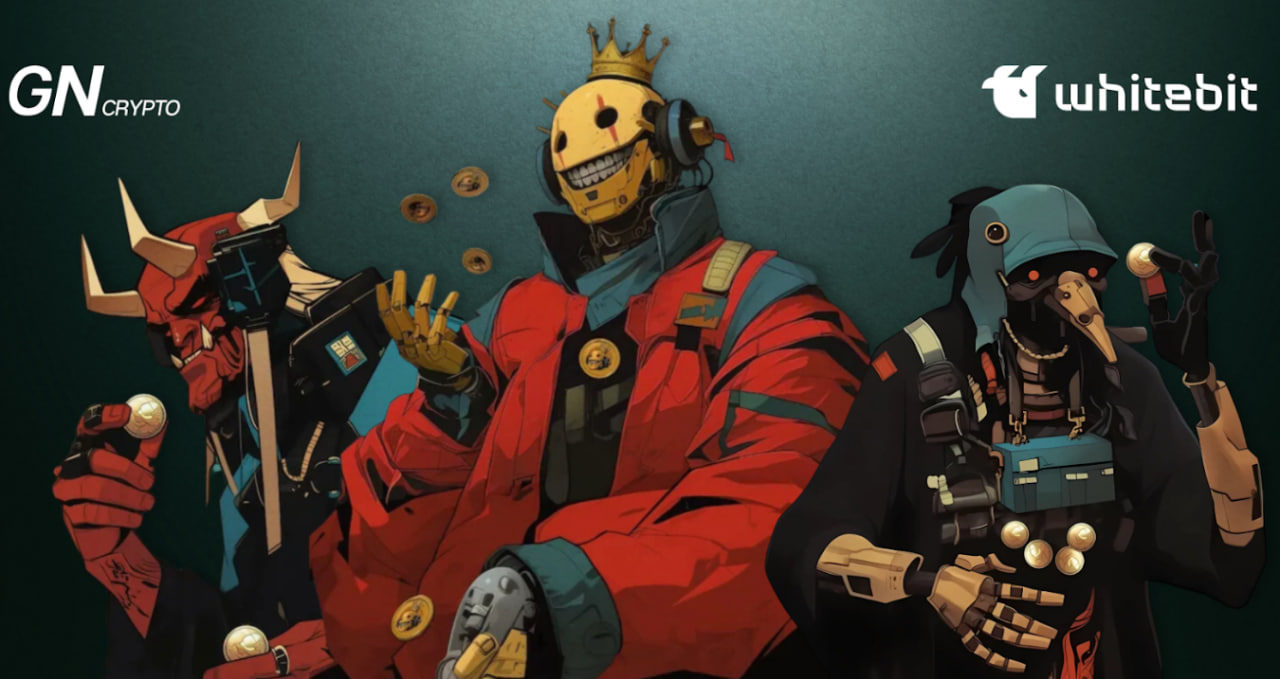Face Your Crypto Fears with WhiteBIT

Is Halloween not the perfect time to take on your crypto fears? It’s the holiday that reminds us that our phobias are often like a carved pumpkin—harmless and full of light. Join WhiteBIT’s activities and say goodbye to your crypto worries.
On this page
Feeling anxious? No need to be!
Although cryptocurrencies offer incredible opportunities for investments, payments, and routine transfers, many users still hesitate, held back by certain fears and doubts. This is perfectly normal for any emerging technology.
Just think about how your grandma looks at you when you pay with your smartwatch at the grocery store. Even after seeing how easy it is, she might still hesitate, afraid she’ll mess up or lose her money.
In a way, many of us are that “grandmother” when it comes to crypto and blockchain. It’s exciting, cutting-edge, and fast, but… it feels a bit intimidating!
For those armed with knowledge and proven strategies, everything becomes simpler and safer. With the right tools to navigate the market and protect themselves from potential “monsters,” users can approach cryptocurrency with more confidence.
WhiteBIT Halloween Event
This Halloween, WhiteBIT, Europe’s largest crypto exchange, invites you to confront the most common crypto threats and take on the challenge yourself by joining their interactive battle against crypto monsters through this link.
Defeat the crypto monsters with WhiteBIT! Source: WhiteBIT
But before you jump into the fight, get to know your adversaries. Learn as much as you can about the key fears and risks that users face, and, most importantly, how to overcome or avoid them.
Shitcoins: Not All That Glitters Is Gold
In the crypto world, “shitcoin” refers to poorly developed cryptocurrencies with no intrinsic value or technical merit. While these coins may seem appealing, thanks to aggressive marketing or media buzz, they usually have no solid technology behind them.
Shitcoins are typically created to pull in quick cash from investors drawn in by the hype.
How to Identify a Shitcoin?
- Lack of innovation: Shitcoins usually don’t bring any technological advancements. They are often copies or parodies of existing coins, without providing any meaningful value or innovation in the market.
- Opaque leadership: Many of these projects are launched by anonymous or little-known developers who don’t disclose their experience or qualifications in blockchain technology.
- Hype-driven promotions: Shitcoins are often accompanied by aggressive marketing, promising sky-high profits and exponential growth, but without any real foundation to back up these claims.
- No development roadmap: Successful cryptocurrency projects generally have a clear strategy and a detailed plan for growth. Be sure to read the whitepaper and focus on the project’s goals, technology rollout, and potential market impact.
Liquidations and Margin Calls: Trading on the Edge
Trading with leverage or borrowed funds in the cryptocurrency market comes with serious risks, the most concerning of which are “Liquidation” and “Margin Call.”
A margin call is when the exchange demands additional funds to keep positions open, while liquidation happens when a trader’s positions are closed automatically due to insufficient margin coverage.
To avoid these pitfalls, here are a few crucial points to remember:
- This market is incredibly volatile. Cryptocurrency prices can fluctuate rapidly, and even a small price drop could lead to your position being liquidated if your risk exposure is too high.
- Psychological pressure. The constant monitoring of prices and the fear of financial loss can cause stress and lead to impulsive decisions. It's essential to stick to the rules of your trading system, not your emotions. Many experienced traders use the “Set-and-Forget” method, letting the market determine the trade’s outcome, which helps reduce stress over short-term losses.
- Liquidations are automatic. If your balance falls below the margin needed to maintain your open positions, the exchange will automatically close your trade. Before this, you’ll receive a “Margin Call” warning, alerting you of insufficient funds and giving you the chance to add capital or reconsider your position.
Either way, liquidations are frustrating and can wipe out a large part of your investments.
Phishing Attacks: Not Every Message Is a Hogwarts Letter
Phishing attacks are the most common type of scam in the crypto world. The goal is to trick users into divulging personal information, private keys, or giving access to their crypto wallets. The endgame is to steal your funds using the acquired data.
How to avoid the bait?
Always verify the URL
Before entering your information on any website, make sure to check the URL. Phishing sites often have slight changes in their domain names. For example, instead of whitebit.com, you might see whittebit.com or whitebit.co.
Enable 2FA
Two-factor authentication gives your account an additional layer of protection. Even if someone manages to steal your passwords, they’ll still need the unique code sent to your phone or email, which refreshes every minute, to get in.
Don’t engage with suspicious emails or messages
Received an unexpected email or message from someone claiming to be a “platform representative,” urging you to click a link or share personal details? This is likely a scam. It’s better to log in directly to your account rather than trusting these communications.
Never share your private keys or seed phrases on untrusted websites
If you’re asked to provide this information, you’re almost certainly dealing with a scam. Don’t give thieves a chance to steal your assets.
Keep your software up to date
Cybercriminals can exploit vulnerabilities in outdated software. Keep your crypto wallet, antivirus, and other protection tools regularly updated to stay secure.
The cryptosphere is rich with treasures and financial potential, but also shrouded in mystery and fear: scammers, flash crashes, and phishing demons lying in wait, hoping to steer you off course. They wander near, always ready to pounce on your assets when you least expect it.
But does a true hero fear these monsters?
Not at all. A hero understands their weaknesses, arms themselves with knowledge and strategies, and when the threats of the cryptoworld attempt to catch them by surprise, they are ready to stand and fight. Monsters will always be part of the story, but they can’t overcome those who are prepared for the battle.
Now, with knowledge, power, and all the right moves, you’re fully equipped to continue fighting for the Cryptoverse with confidence—and with your friends by your side!
Now, let’s dive into the festive activities on WhiteBIT.
WhiteBIT Festivities. Source: WhiteBIT
Here’s how to take part:
- Sign up for WhiteBIT and complete your identity verification (KYC) if you haven’t yet;
- Hit the “Participate” button on the event page;
- Share the event post on Instagram or X;
- Finish the tasks on the event page faster than everyone else;
- Fill out the Google form with your WhiteBIT nickname, your social media username where you shared the post, and your Polygon wallet address.
Kickoff: October 21 at 12:00 PM (UTC)
End: October 28 at 12:00 PM (UTC)
Winners Announced On: October 31
Total Winners: 200
Prize Pool: 4000 USDT + 2500 USDTB + NFTs
Prize Breakdown:
- 1st-100th place — 20 USDT + 25 USDTB + themed NFT
- 101st-200th place — 20 USDT + themed NFT
- Remaining participants — themed NFT
For complete rules and conditions of the “Halloween Gamedrop: Crypto Heroes vs. Crypto Monsters” event, visit WhiteBIT’s official blog through the link.
The content on The Coinomist is for informational purposes only and should not be interpreted as financial advice. While we strive to provide accurate and up-to-date information, we do not guarantee the accuracy, completeness, or reliability of any content. Neither we accept liability for any errors or omissions in the information provided or for any financial losses incurred as a result of relying on this information. Actions based on this content are at your own risk. Always do your own research and consult a professional. See our Terms, Privacy Policy, and Disclaimers for more details.



























